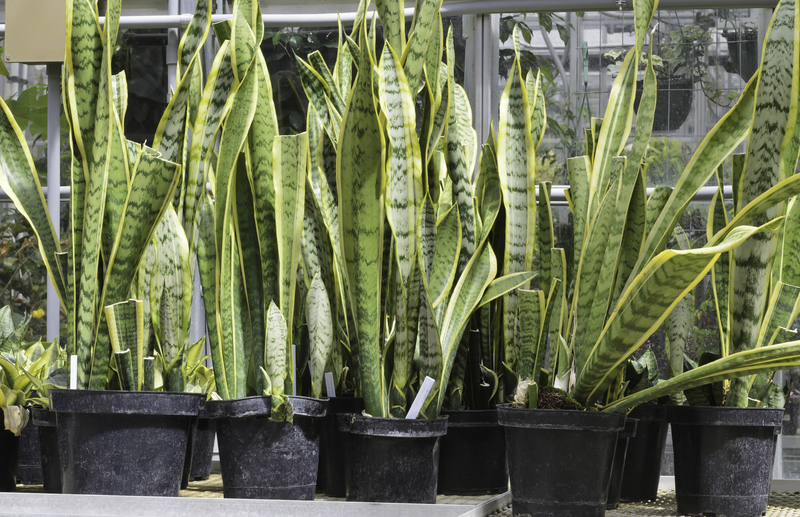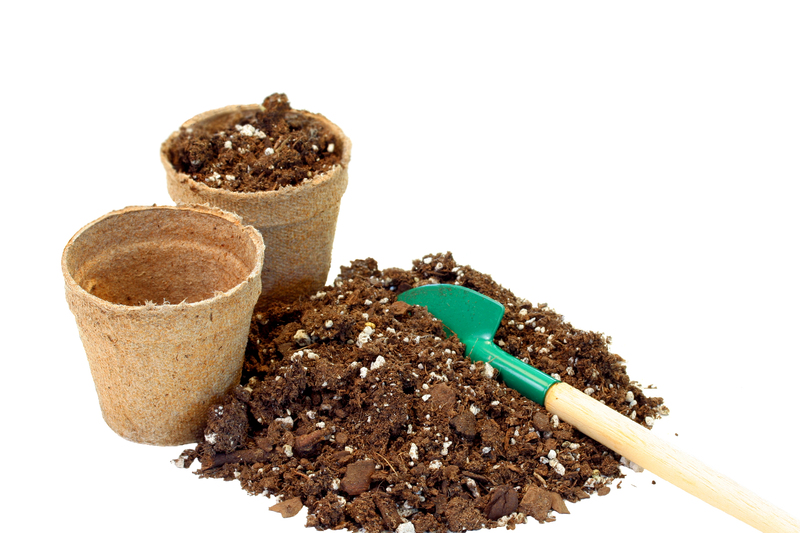Preserving the Beauty of Your Garden Through Winter
As the vibrant days of autumn draw to a close, thoughtful gardeners turn their attention towards maintaining and preserving the beauty of their gardens through winter. The colder months pose unique challenges, but with strategic planning and a bit of know-how, you can protect your plants, maintain visual interest, and ensure your landscape remains a source of joy throughout the season. In this comprehensive guide, we will cover essential winter gardening practices, plant protection tips, and creative ideas for winter garden interest. Let's embark on the journey of keeping your garden beautiful during winter!
Understanding Winter's Impact on Gardens
Before diving into practical preservation steps, it is crucial to understand how winter affects your garden. Plants face threats from frost, wind, heavy snow, and fluctuating temperatures. Bare soil can erode, perennial roots might freeze, and delicate branches may break under snow's weight. However, gardens can be stunning in winter, showcasing structure, texture, and subtle color, with the right strategies in place.

Preparing Your Garden for Winter
1. Clean Up with Care
- Remove diseased or pest-ridden plants
- Collect fallen leaves and debris--compost healthy material
- Leave ornamental grasses and seed heads for winter beauty and wildlife
While it may be tempting to tidy everything, leaving some seed heads and stems can provide interest and food for birds, offering a picturesque winter landscape.
2. Mulching: Nature's Protective Blanket
Mulch is essential for preserving your garden's health during winter. Applying a layer of organic mulch:
- Regulates soil temperature
- Retains moisture
- Protects roots from freeze-thaw cycles
Good materials for winter mulch include shredded leaves, pine needles, straw, and wood chips. Apply mulch after the ground has frozen to prevent rodents from nesting.
3. Protecting Delicate Plants
Some perennials, roses, and young shrubs need extra protection. Consider these techniques:
- Burlap wraps for shrubs vulnerable to drying winter winds
- Leaf-filled wire cages around tender plants
- Cloche covers or cold frames for raised vegetable beds
Don't forget to tie up tall or floppy plants to prevent breakage under snow.
Preserving Garden Structure and Design in Winter
1. The Backbone of Winter Gardens: Evergreens
Planting a variety of evergreens ensures your garden retains lush greenery and form year-round.
- Boxwoods, hollies, and conifers for structure
- Heathers and hellebores for low-growing color
Group evergreens to create attractive focal points and anchor beds, preserving beauty even when deciduous plants are bare.
2. Adding Color and Texture with Winter Interest Plants
Highlight winter's subtle palette and structural beauty by choosing plants such as:
- Red-twig dogwood: striking red stems stand out against snow
- Witch hazel: fragrant, spidery blooms in late winter
- Ornamental grasses: feathery plumes catch frost and sunlight
- Winterberry holly: bright red berries attract wildlife
3. Hardscape Elements for All-Season Appeal
Don't forget the beauty of stone paths, wooden trellises, sculptures, or garden benches. These elements remain visible after leaves have fallen, giving your garden structure and interest through the coldest months.
Wildlife: Enhancing and Preserving Your Garden's Ecosystem
1. Feed the Birds (and Other Creatures)
- Leave seed heads intact for finches and sparrows
- Hang suet or seed feeders for wintering birds
- Maintain a heated birdbath for fresh water
By supporting wildlife, you enrich the garden's winter beauty and create a lively, sustainable ecosystem. Birds bring motion and color to otherwise quiet winter scenes.
2. Insect Habitats and Overwintering Sites
- Leave some leaf litter for overwintering butterflies and beneficial insects
- Add a bug hotel or pile of twigs for shelter
Preserving your garden for winter means caring for its smallest residents, who will help your garden flourish come spring.
Protecting Garden Infrastructure and Tools
A beautiful garden requires regular maintenance and care not only for plants, but the supporting structures and tools as well.
1. Garden Beds and Raised Planters
- Repair any rotted lumber or loose hardware before snow hits
- Cover empty beds with a protective mulch or a winter cover crop such as rye or clover
2. Watering Systems and Garden Hoses
- Drain and store hoses to prevent splitting from ice
- Shut off outdoor water supplies and insulate spigots
Creative Ideas for Beautiful Winter Gardens
Just because it's winter doesn't mean your garden has to be dull or dreary! Explore these tips to keep your outdoor space exciting and beautiful:
- Add fairy lights to shrubs or trees for a magical nighttime glow
- Decorate with seasonal containers using evergreen boughs, pinecones, and berries
- Install a garden mirror to reflect snow and create the illusion of greater space
- Place sculptures or painted driftwood for artistic flair
Combining functional gardening with creativity helps in maintaining your garden's beauty during winter and lifts spirits all season long.
Common Challenges and Solutions for Preserving Winter Gardens
Dealing with Heavy Snow
When heavy snow threatens the beauty of your garden, gently brush accumulation off shrubs and evergreens using a soft broom. Avoid shaking branches roughly, as frozen wood is brittle and prone to breakage.
Protecting Against Frost Heave
Frost heave results from repeated freeze-thaw cycles pushing plant roots out of the soil. Prevent this by adding extra mulch, particularly around new plantings, and watering thoroughly before deep freezes.
Minimizing Salt Damage
Salt from de-icing products can damage garden beds near walkways or driveways. Protect plants with burlap screens and use sand or pet-safe ice melt alternatives where possible.
Preserving the Beauty of Specific Garden Types Through Winter
1. Flower Gardens
- Cut back perennials only as needed
- Choose plants with attractive winter seed heads (e.g., echinacea, rudbeckia)
- Add spring-blooming bulbs in fall for early spring color
2. Vegetable Gardens
- Plant cover crops to improve soil and prevent erosion
- Harvest remaining vegetables before hard frost
- Use cold frames for winter greens or root vegetables
3. Container and Balcony Gardens
- Group pots together against a south-facing wall for protection
- Wrap containers with burlap or bubble wrap to insulate roots
- Use hardy evergreens and switch out summer annuals for winter displays
Sustainable Winter Garden Preservation
Maintaining the beauty of your garden through winter doesn't have to come at an environmental cost. Use eco-friendly methods:
- Compost autumn leaves and plant debris
- Use locally-sourced mulch materials
- Collect rainwater for late-season watering
- Plan for pollinator-friendly plants that provide year-round habitat
Checklist for Winter Garden Preservation
- Inspect plants, supports, and beds for repairs
- Apply mulch after the first freeze
- Water evergreens until the ground is frozen
- Clean and store tools
- Protect tender plants with covers or insulation
- Add visual interest with lights, containers, or art
- Support local wildlife with food and shelter
- Review and update your garden design for greater winter interest

Frequently Asked Questions: Preserving Your Garden's Beauty in Winter
Can you plant anything during winter?
While most planting is done in spring and fall, certain trees, shrubs, and bulbs can be planted if the soil is workable--especially in milder climates. Stick to hardy species and provide ample mulch for protection.
How often should you water your garden in winter?
Water evergreen shrubs and young trees before the ground freezes, as winter sun and wind can dry them out. After the ground is frozen, only water during warm spells if the soil is dry and plants show signs of stress.
What is the best mulch for winter garden protection?
Organic mulches such as shredded leaves, pine needles, bark chips, or straw are effective for insulating plant roots and improving soil structure.
Should you fertilize in winter?
Avoid fertilizing during winter--plants are dormant and will not use the nutrients. Instead, compost or mulch will break down slowly, feeding the soil for spring growth.
Conclusion: Enjoy a Beautiful Garden All Year Long
Preserving the beauty of your garden through winter is both an art and a science. It requires foresight, experimentation, and creativity. By protecting your plants, supporting wildlife, and incorporating structure and color, your garden can remain a place of inspiration regardless of the season. When spring arrives, you'll find that your efforts have created healthier plants, richer soil, and a landscape ready to burst back into life.
Winter is not an end, but a beautiful interlude in the symphony of your garden's year. So wrap up warmly, step outside, and enjoy the serene beauty of your winter garden.